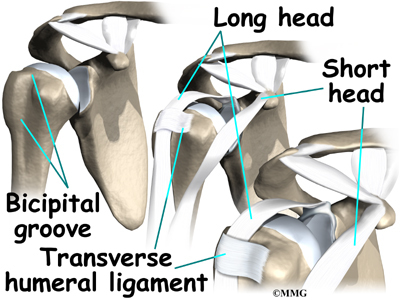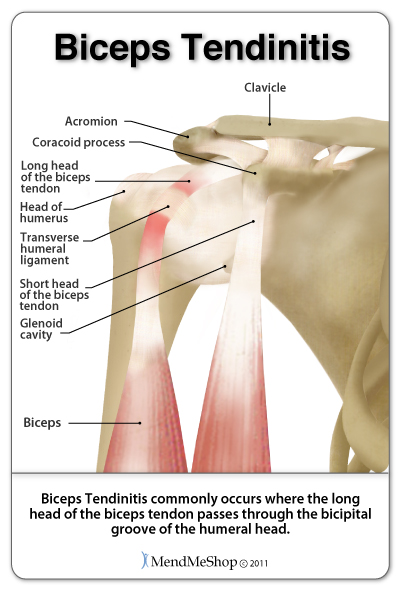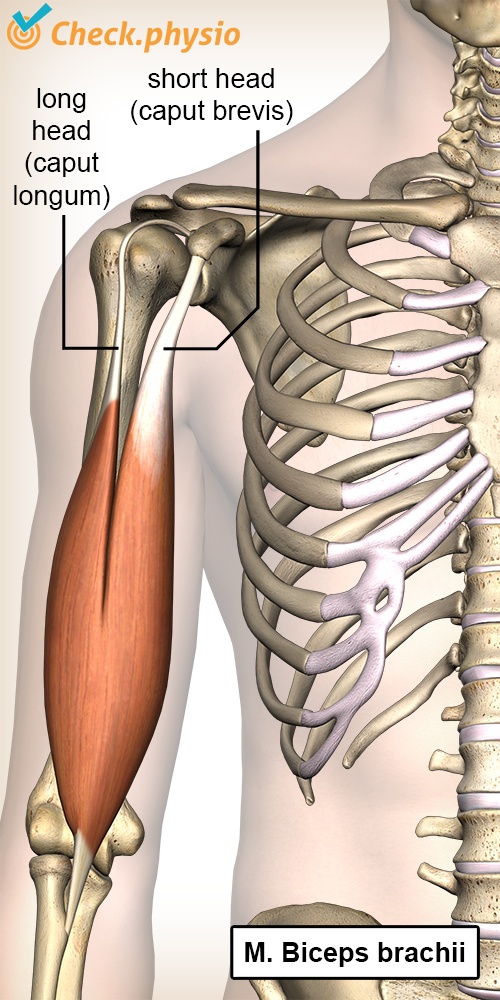Bicipital Groove Tendonitis Test

With biceps tendinitis it s usually the long head which attaches to the top front of the shoulder that gets injured.
Bicipital groove tendonitis test. The yergason s test is used to test for biceps tendon pathology such as bicipital tendonitis. The bicipital groove also known as the intertubercular sulcus or sulcus intertubercularis is the indentation between the greater and lesser tuberosities of the humerus that lodges the biceps tendon. Here s how to do the yergason s test for slap lesion or biceps pathology which demonstrates as pain in the bicipital groove popping out of the biceps tendon and shoulder instability. Biceps tendonitis speed s test.
Have the patient resist a movement into extension a first time supinated and a second time with the arm pronated. Biceps tendinitis is a disorder of the tendon around the long head of the biceps muscle. Pain at this point may indicate a positive test for sub acromial bursitis. The patient is asked to externally rotate and supinate their arm against the manual resistance of the therapist.
Inflammation of the biceps tendon within the intertubercular bicipital groove is called primary biceps. Tenderness on palpation of the bicipital groove also indicates bicipital tendinitis. The patient should be seated or standing with the humerus in neutral position and the elbow in 90 degrees of flexion. Start with the patient s arm in 90 degrees of shoulder flexion.
It identifies the presence of a pathology involving the biceps tendon or glenoid labrum the specific positive findings to the test include. The tendon is exposed on the anterior shoulder as it passes through the humeral bicipital groove and inserts onto the superior aspect of the labrum of the glenohu. Purpose of test. Bicipital tendinitis or biceps tendinitis is an inflammatory process of the long head of the biceps tendon and is a common cause of shoulder pain due to its position and function.
The bicipital groove is typically 4 6 mm deep 1. To assess the integrity of biceps tendon or labrum. Pain in the bicipital groove indicating biceps tendinitis subluxation of the long head of the biceps brachii muscle and presence of a slap tear. The biceps muscle has two heads simply named the long head and the short head.
This test is used to check the ability of the transverse humeral ligament to hold the biceps tendon in the bicipital groove 1 patient sits while examiner stands in front. When the therapist stops pushing down on the arm a sudden jerking motion may result. A positive test is indicative of biceps tendon instability or tendonitis. Palpating the biceps tendon as it passes through the bicipital groove to identify any.

















